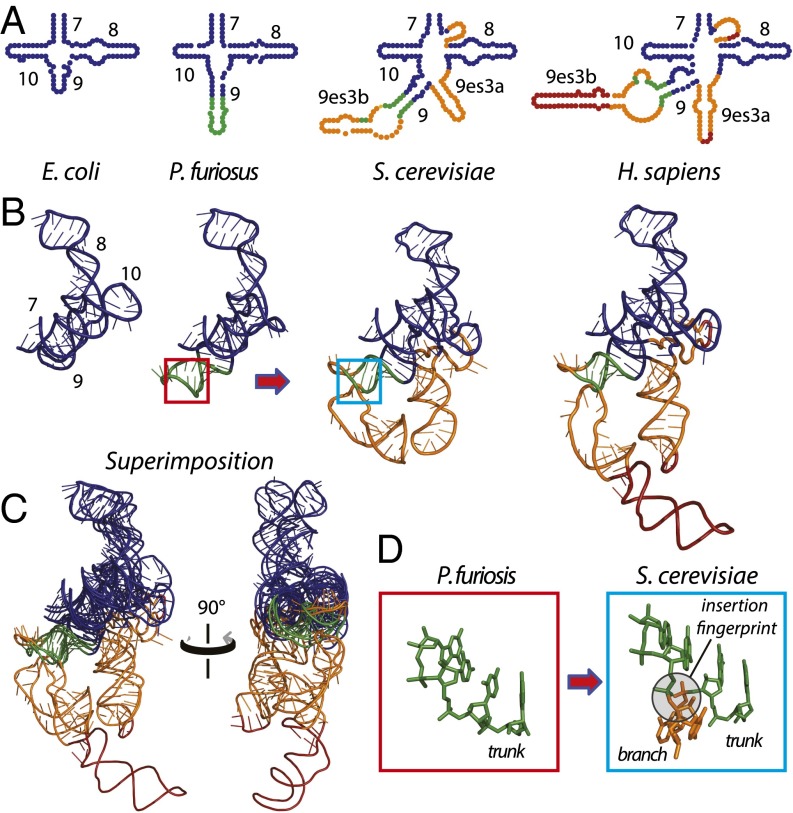Fig. 1.
Accretion of SSU rRNA as illustrated by helices 7–10/es3 from species of increasing complexity. A four-way junction at the surface of the common core, formed by helices 7–10, has expanded by accretion. Accretion adds to the previous rRNA core, leaving insertion fingerprints. (A and B) Secondary (A) and 3D (B) structures are preserved upon the addition of new rRNA. (C) Superimposition of the 3D structures highlights how new rRNA accretes with preservation of ancestral rRNA. (D) A characteristic insertion fingerprint is shown in red and blue boxes. In all panels, the rRNA that approximates the common core is blue. An expansion observed in both archaea and eukaryotes is green. An expansion that is observed only in eukaryotes is gold. An additional expansion in higher eukaryotes (mammals) is red.

